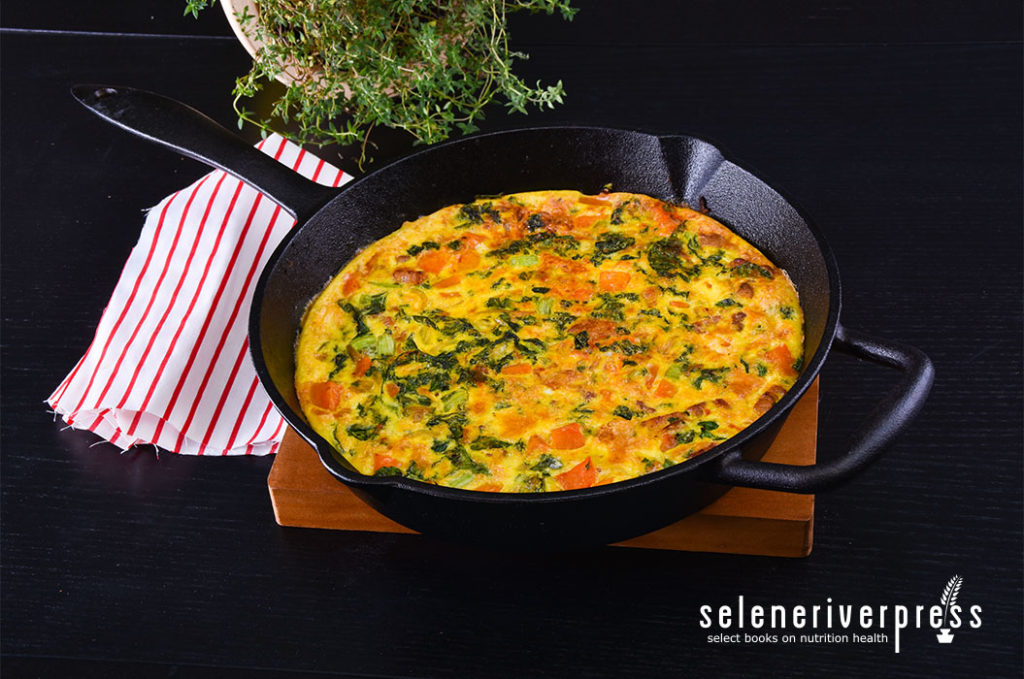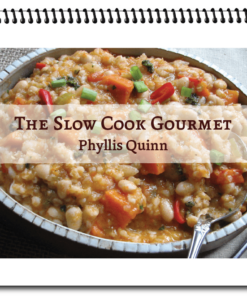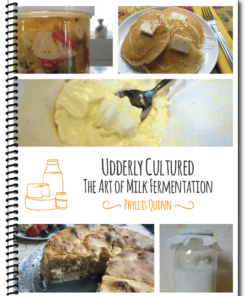Ask Chef Phyllis
Our neighbors stopped by recently around lunchtime, and all I had in the house was eggs. I know that frittatas are so popular today, but what proportions make a good one? What kind of pan is best? My guests said that a cast-iron skillet is a good choice. Can you help?
—Christine from Superior, CO
When in doubt, if you have eggs—frittata! Featured in Bon Appetit and the Rachael Ray Show, frittatas are all the rage. It seems that everyone is talking about them these days.
And you’re correct in your belief that the right proportions make the best frittata. Not to mention the right pan.
Christine, no food is so under-appreciated as the humble egg. It’s wonderful that we’re elevating the egg in all its simplicity, but we shouldn’t forget to praise it for its versatility as well. In Europe and other parts of the world, eggs are often served for dinner, and to that I say why not!
Do check out the unusual pairing of ingredients in this frittata recipe. With added beans and greens, this is a protein-rich one-skillet meal that would be just as perfect for dinner or a late Sunday supper as it would be for lunch or breakfast. I bet that most of us have some kind of canned beans in our pantry, as well as some fresh veggies like scallions or onions close at hand. Choose what you like.
Here’s something worth sharing: Cast-iron relics are easy to restore, no matter how old, forgotten, rusty, or greasy they appear. (But, as I’m fond of saying, that’s another post.)
In my long cooking career, I’ve seen a huge, 16-inch cast-iron skillet that was used for deep fat-frying chicken. But in my opinion, the 8-inch and 12-inch are the most usable and versatile sizes. I have both and I love them.
Hands down, a cast-iron skillet is the best tool you can have in your kitchen, whether it’s well-loved and broken in or brand new. Perfect for crusty southern corn breads, huge German pancakes, dollar-sized potato pancakes, and everything in between, it can go from stovetop to oven without any interruption or fuss. And it’s perfect for whenever you need constant, even heat. I guarantee you will become an admirer in short order too!
From everything I’ve read, including the consensus of test kitchens, a cast-iron skillet is the best choice for a frittata. Use the following proportions to make your frittata the best it can be:
-
- 12-inch skillet: use 12 eggs for about 4–6 servings
- 10-inch skillet: use 10 eggs for about 3–4 servings
- 8-inch skillet: use 8 eggs for 2 (hungry) guests
Frittata
Chef’s note: A well-buttered, shallow, 12-inch ovenproof casserole may be substituted for the cast-iron skillet. However, you will need to sauté the chickpeas and greens first. Extra steps and a fry pan would be necessary.
This recipe makes 4–6 generous servings and is prepared in a 12-inch cast-iron skillet.
Ingredients
12 large eggs
1 cup chopped tender fresh herbs (such as parsley, basil, cilantro, or any other herbs you like)
¾ cup Greek yogurt or sour cream
½ teaspoon red pepper flakes
1 teaspoon sea salt
2 tablespoons each butter and olive oil (preferred), or 4 tablespoons butter, divided
2 (15 oz.) cans chickpeas, drained and patted dry
2 teaspoons medium curry powder (optional)
1 medium onion, finely chopped
3–6 cloves garlic, crushed or thinly sliced
1 small bunch baby kale, Swiss chard, or other hardy greens, ribs removed and greens chopped or torn into 1-inch pieces
1–1½ cups homemade marinara sauce
Instructions
- Preheat oven to 375°F. In a large bowl, whisk together eggs, yogurt or sour cream, herbs, red pepper flakes, and salt.
- Heat 1 tablespoon each butter and olive oil (or 2 tablespoons butter) in a 12-inch skillet over medium heat. Add drained chickpeas and curry powder. Cook and stir occasionally for about 6–8 minutes or until golden brown.
- Transfer 1 cup of the chickpeas to a bowl and reserve.
- Add onion and garlic to skillet along with the remaining 1 tablespoon each olive oil and butter (or remaining 2 tablespoons butter) to the pan. Add the kale or Swiss chard a little at a time until it wilts slightly.
- Pour in the egg mixture, cooking and swirling the pan until the edges are just set, about 5 minutes.
- Place skillet in preheated oven. Bake 15–18 minutes until puffed. Let rest on the counter 5–7 minutes before serving.
- Serve with the marinara sauce and the reserved chickpeas. Garlic rubbed on toasted bread is a nice addition as well.
Image from iStock/Bloor4ik.





